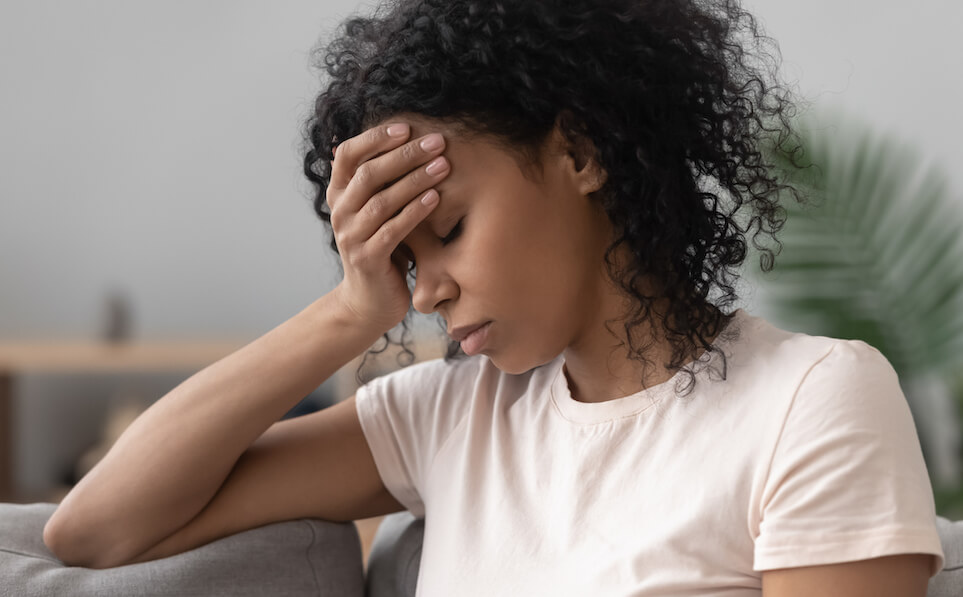
What are the Symptoms of PTSD?
Just as there are many causes of PTSD, there are also many signs and symptoms of PTSD, as each person who experiences a traumatic event endures that event from their entirely unique perspective. That said, there are some universal PTSD symptoms that present in varying degrees and various ways for those who are living a post-trauma life.
PTSD Symptoms: Four Primary Signs and Symptoms of PTSD
Before we dive into what some of these common PTSD symptoms are, it can help to answer the foundational question – “What is PTSD?” In short, it is Post-Traumatic Stress Disorder, a condition that follows a significant threat or negative experience. It is a condition caused not by something you were born with, or genetically predisposed to, but by something, or a series of things, that have happened to you.
The above may leave you asking yourself, “So if my genetics and brain chemistry have nothing to do with my developing PTSD, why have others experienced the same things and been able to put the events behind them?” And that is a very fair question. The answer, of course, is complex.
While it is true that whether or not you develop PTSD can be influenced by your unique mind, as we cover in Causes of PTSD, the fact remains that even if your brain is wired in such a way as to cause you to suffer the lasting effects of PTSD, there would be no such effects if the experiences you’ve endured hadn’t occurred. Unlike many mental disorders, PTSD never develops on its own without outside influence. While many mental conditions can be hereditary, and present regardless of what you encounter in life, PTSD is always the result of something that has happened to you.
PTSD Symptoms: Four Primary Types
Signs and symptoms of PTSD fall into one of four main categories:
- Re-Experiencing Symptoms (Reliving the event)
- Hyperarousal Symptoms (Restlessness, feeling high-strung, jumpy, keyed up, hypervigilant, or uneasy)
- Avoidance Symptoms (Avoiding situations, locations, and/or people that remind you of the traumatic event)
- Negative changes in your beliefs or feelings (You may start to take on a negative sense of self and/or others in your life, which can extend to a negative worldview.)
For more information about these types of PTSD symptoms, please visit this PTSD resource developed by the Veterans Administration.
Now that we’ve covered the types of PTSD symptoms, let’s take a closer look at some of the common, specific symptoms within each type you or someone close to you may be experiencing.
PTSD Symptoms: Re-Experiencing Symptoms
- Intense flashbacks
- Recurring nightmares
- Experiencing sights, sounds, or smells that “trigger you” to relive the traumatic event
- Unwelcome thoughts
PTSD Symptoms: Hyperarousal
- Anxiety
- Jumpiness/Twitchiness
- Easy to startle
- Paranoia
- Hypervigilance
- Uncharacteristic anger or outbursts
- Inability to concentrate or focus
- Trouble falling or staying asleep
- Constantly feeling “on alert” or “on edge”
Oftentimes, hyperarousal symptoms of PTSD can be mistaken for symptoms that someone is abusing or coming down from drugs. We have treated many clients whose “jerky” or “tweaky” mannerisms resembled drug withdrawal. While addiction and PTSD are very different, the negative impact they can have on your mind and body does share some similarities. That reason alone should give you the resolve to commit to treatment. You haven’t done anything wrong; there is no reason to, or benefit from, continuing to live with the life-altering symptoms of PTSD.
PTSD Symptoms: Avoidance
Symptoms of avoidance will vary depending on the traumatic event that you survived. Generally, people presenting with avoidance symptoms will steer clear of anyone or anything that reminds them – or “triggers” memories – of the event. Examples of avoidance symptoms can include:
- If you were involved in a car accident, you may go out of your way to avoid driving on the road where the accident happened, or avoid riding in cars altogether.
- If you survived a flood, you may move out of a flood zone and be wary of large bodies of water.
- If you survived an abusive relationship, you may avoid getting close to another person for fear that it could happen again.
PTSD Symptoms: Negative Outlook
- Mistrust of others
- Feelings of being slighted, misled, or betrayed
- Depression
- Engaging in substance abuse
- Feeling guilt, shame, or responsibility for what happened
Some trauma survivors may also experience hallucinations or delusions, which are characteristic of PTSD with psychosis, a more severe form of PTSD.
While you may suffer more from symptoms within one of these categories than another, the majority of clients with PTSD that we have worked with have exhibited at least two symptoms of PTSD from each. The degree to which each negatively affects your life is a major concern as well. You may, for example, experience many PTSD symptoms of avoidance, but are most negatively impacted by one symptom of hyperarousal. At Bridges to Recovery, we will explore each of your symptoms of PTSD individually, as well as helping you gain a greater understanding of how they overlap. We have found this comprehensive approach offers the most benefits.
While most symptoms of PTSD in men, women, teens and children are near universal, there are some that are more likely to be exhibited by men, and some that are more likely to be exhibited by women. Let’s take a closer look at a few of those…
PTSD Symptoms in Men
These symptoms can present for both men and women, but have been reported with greater frequency and/or intensity for men.
- Alcoholism
- Drug abuse
- Anger control issues





